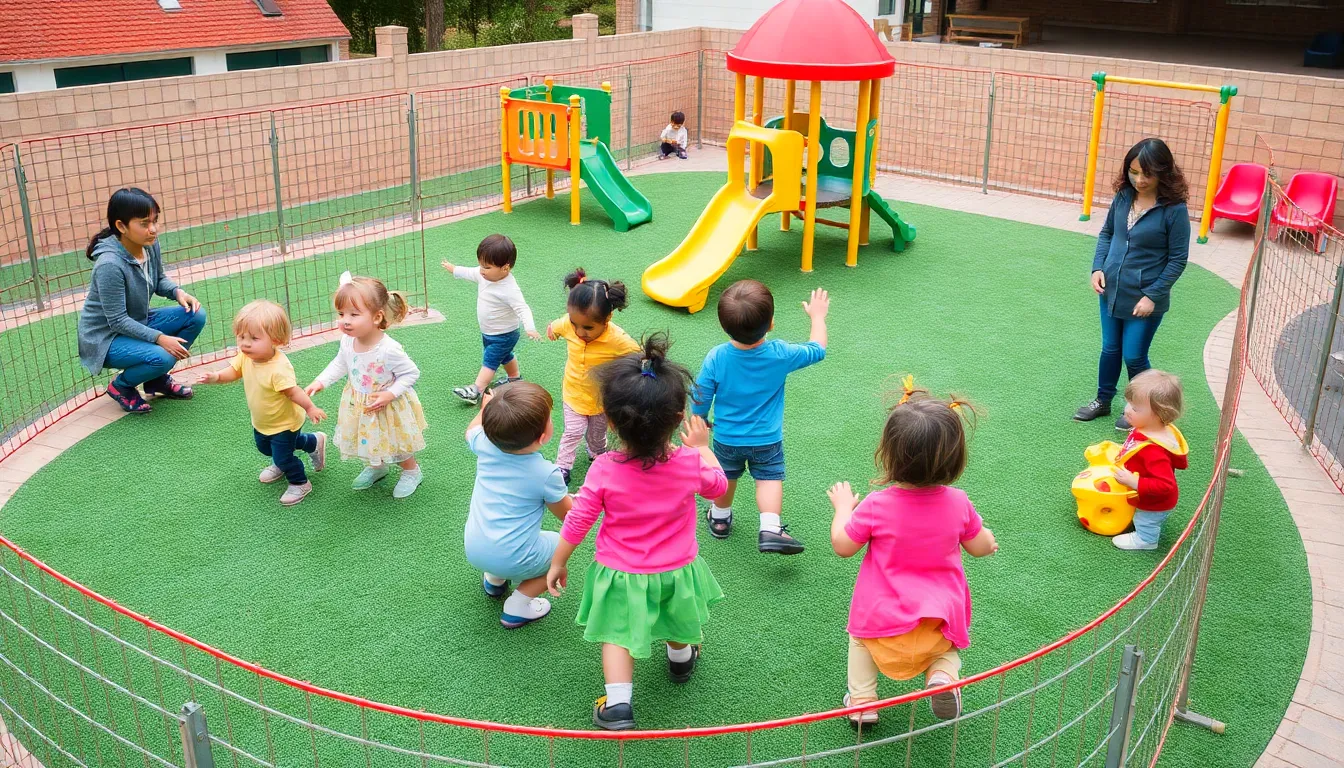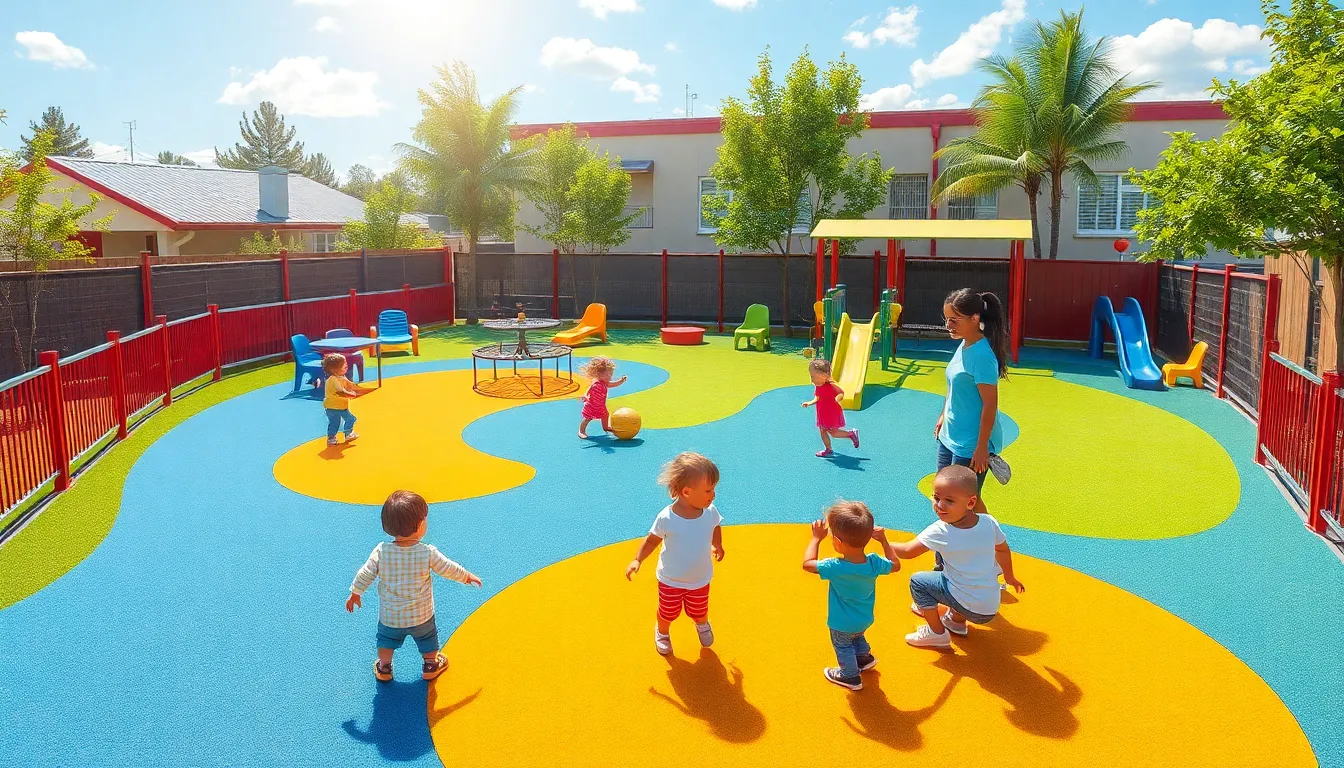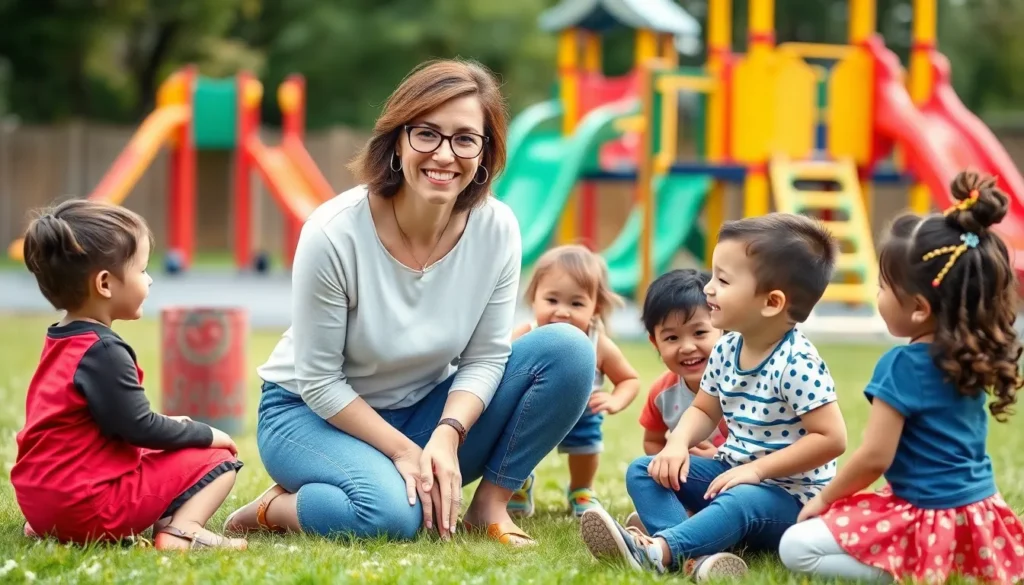Table of Contents
ToggleEvery parent knows that sending their little ones off to preschool can feel like sending them into the wild—complete with tiny, unpredictable creatures and a jungle gym that could double as a daring obstacle course. While kids are busy mastering the art of finger painting and snack time negotiations, it’s crucial to ensure their safety in this bustling environment.
Preschool safety is more than just a buzzword; it’s the foundation of a worry-free learning experience. From secure play areas to vigilant staff, every detail matters. After all, who wouldn’t want their child to explore, learn, and grow without the added stress of potential mishaps? Let’s dive into the essential elements that keep those pint-sized adventurers safe while making sure they have a blast in the process.
Understanding Preschool Safety
Safety in preschool settings forms the foundation of a positive learning environment. A secure atmosphere supports children’s exploration and development while instilling confidence in parents.
Importance of Safety in Preschool Settings
Safety ensures children feel secure, promoting healthy emotional and social growth. Effective supervision by trained staff reduces accidents and fosters a nurturing environment. Additionally, regulating safety protocols enhances trust among parents, knowing their children are protected. The educational experience thrives when safety measures encourage active, unimpeded participation in learning activities. Safety is not just a policy but a priority that allows children to build skills and friendships without fear.
Common Safety Risks in Preschools
Various safety risks exist in preschool settings. Inadequate supervision can lead to children wandering off or engaging in dangerous behavior. Unsafe play equipment may cause injuries, highlighting the need for regular inspections and maintenance. Allergens present in snacks or surroundings can trigger allergic reactions, necessitating strict allergy management protocols. Environmental hazards like wet surfaces or clutter increase the risk of slips and falls. Awareness of these risks allows for the implementation of appropriate safety measures, minimizing accidents and ensuring a secure preschool environment.
Creating a Safe Environment


Establishing a secure preschool environment involves adhering to strict standards. Facility safety standards encompass regulations governing cleanliness, equipment safety, and accessible exits. Indoor spaces must remain free of hazards, ensuring children can explore freely. Frequent inspections uncover potential risks, allowing for timely solutions. Outdoor play areas require soft surfaces under equipment to prevent injuries from falls. Safety barriers should enclose these spaces, limiting access to unsafe areas. Compliance with local health codes increases overall safety and builds parent trust.
Implementing safety protocols and procedures enhances children’s security. Staff training programs cover emergency evacuation routes and injury response methods. Regular drills familiarize kids with procedures, making them more confident during emergencies. Communicating policies with parents strengthens community trust and awareness. Routine maintenance on equipment ensures it remains functional and safe for play. First aid kits and emergency contact information should always be readily accessible. These measures create a proactive safety culture, allowing children to learn and play in a secure environment.
Promoting Safety Awareness
Safety awareness in preschools enhances children’s protection and builds trust with parents. Essential components include continuous staff training and engaging parents in safety practices.
Training for Staff and Educators
Staff training focuses on emergency procedures and safety protocols. Educators learn to identify potential hazards in play areas and classrooms. Regular workshops ensure they stay updated on best practices. Foster a culture of vigilance among staff through reinforcement of safety measures. Training empowers educators to act swiftly in emergencies, safeguarding children’s wellbeing. Monitoring equipment regularly allows staff to address safety concerns proactively.
Engaging Parents in Safety Practices
Parents play a crucial role in promoting safety at preschools. Encouraging them to participate in safety meetings strengthens community ties. Providing information about safety procedures fosters transparency and trust. Involving parents in safety drills enhances preparedness among families. Regular communication keeps safety top of mind, reminding parents of potential hazards. Empowering parents through education allows them to reinforce safety measures at home.
Emergency Preparedness in Preschools
Emergency preparedness in preschools involves planning and practices that ensure a safe environment for children. Addressing potential emergencies proactively strengthens safety measures and fosters a responsive community.
Developing an Emergency Response Plan
An effective emergency response plan outlines procedures for various scenarios, including natural disasters, medical emergencies, and lockdown situations. Each plan should include clear communication strategies, designated roles for staff, and specific evacuation routes. Regular updates ensure that all staff members understand their responsibilities and that the plan remains relevant. Engaging parents in the development process enhances familiarity and support. Reviewing the plan at least annually keeps it fresh and aligned with best practices and regulatory requirements.
Conducting Safety Drills
Conducting safety drills prepares children and staff for emergencies by simulating various situations. Scheduling these drills at least twice a year maintains readiness and helps children grasp expectations during real events. Staff should guide children through each drill calmly, reinforcing the importance of following instructions. Debriefing after drills allows staff to discuss what worked well and what needs improvement. Gathering feedback from participants promotes ongoing enhancement of procedures and comfort in emergency situations.
Prioritizing preschool safety is essential for nurturing a secure environment where children can thrive. By implementing stringent safety protocols and fostering a culture of awareness among staff and parents, preschools can significantly reduce risks. Regular training and community involvement not only enhance safety measures but also build trust between educators and families.
Creating a safe space allows children to explore and learn without unnecessary worry. As preschools continue to adapt and improve their safety practices, they pave the way for a brighter future where children can grow with confidence and joy.







